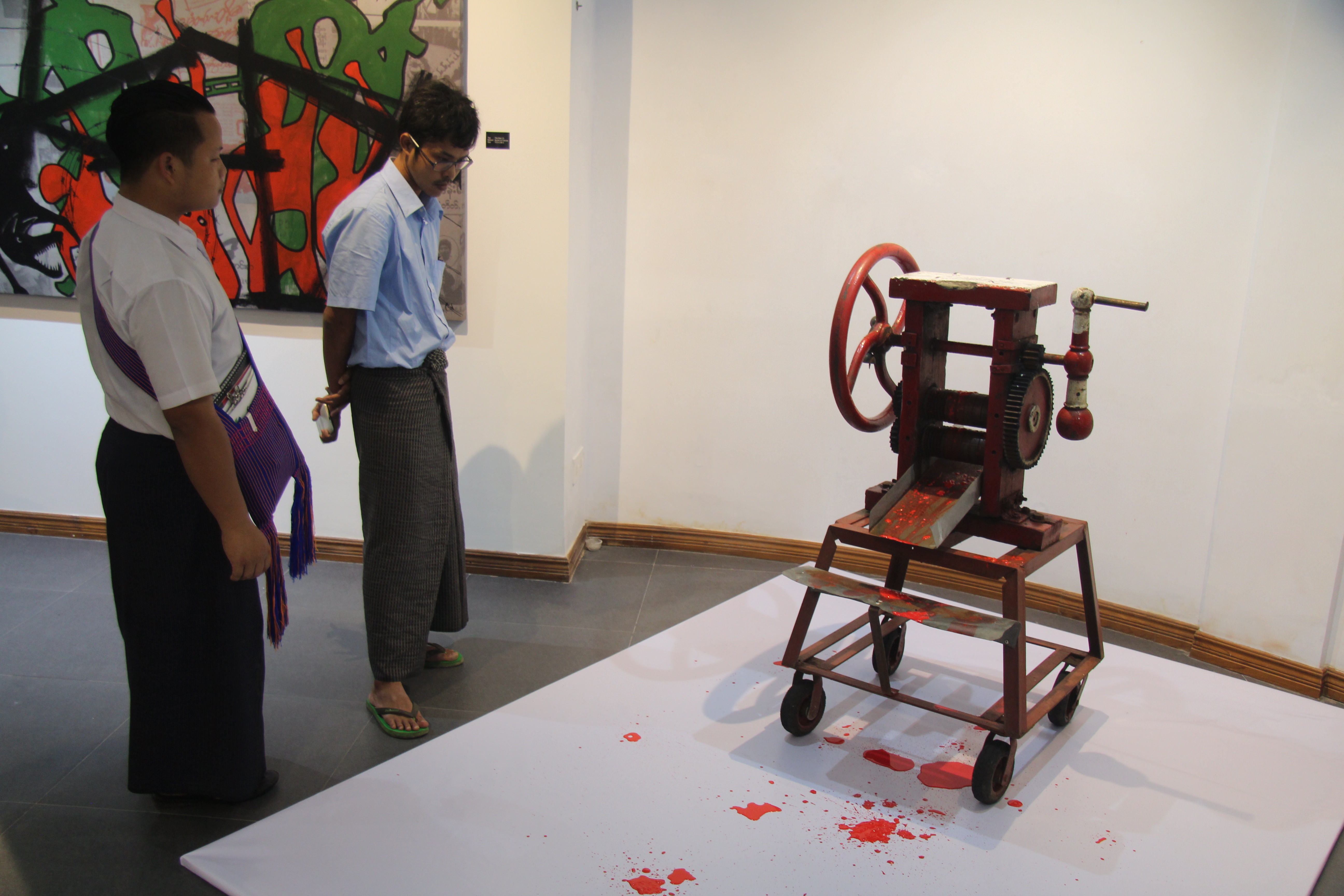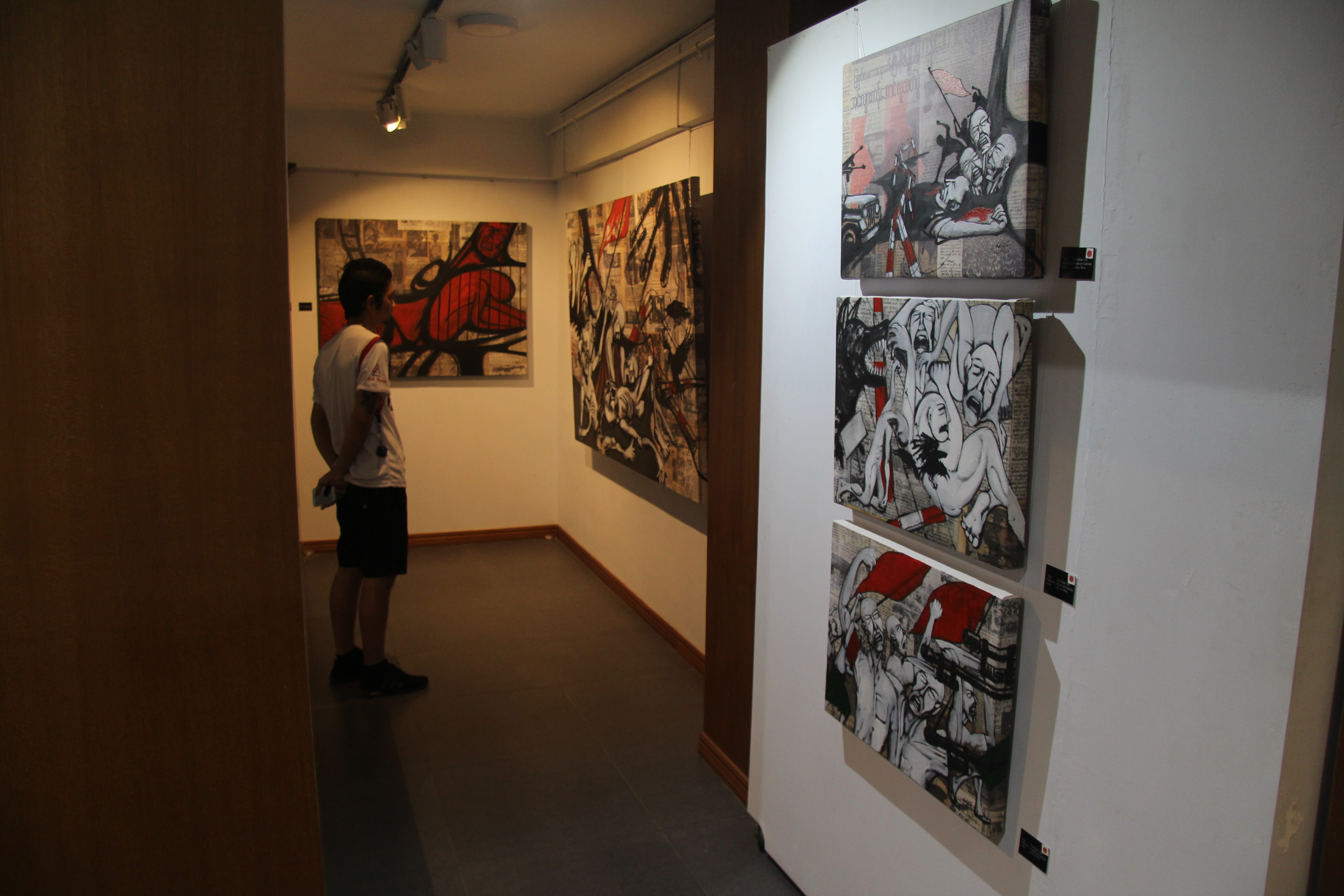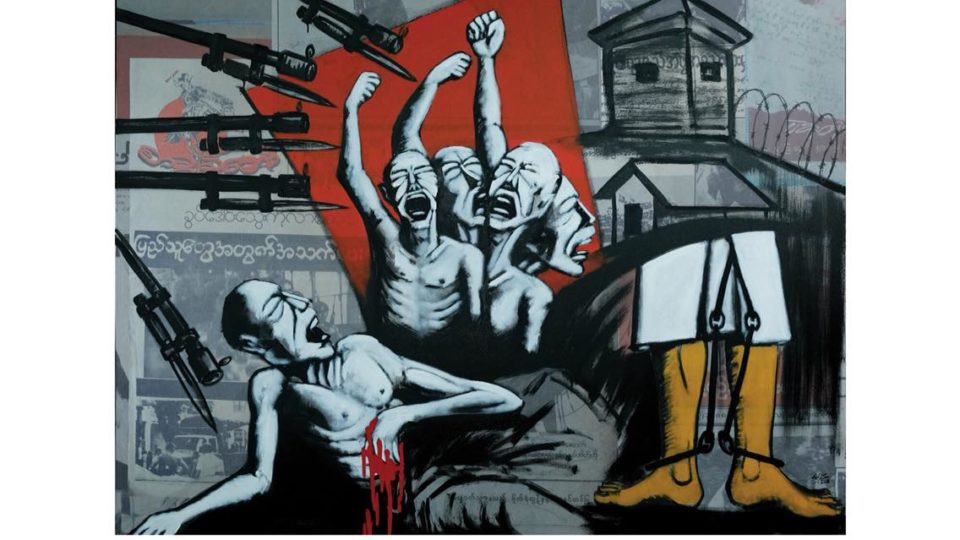Aung Kyi Soe was nine years old when students rose up across Myanmar on Aug. 8, 1988, to demand an end to military rule. Living in the countryside, he and his family were spared the brunt of the military violence that claimed the lives of thousands of revolutionaries in the cities. But as he grew up, eventually becoming a painter in a country still ruled by generals, Aung Kyi Soe learned what the generation above him had fought and died for, and their experiences scarred him for life.
“What I experienced wasn’t as bad as in the cities. But even though I was only nine, I still remember what happened,” he told Coconuts at the opening of his solo exhibition “Scar” at Yangon’s OK Art Gallery.
Aung Kyi Soe’s paintings depict the horrors of the month-long crackdown on pro-democracy protestors – bodies being crushed by the machinery of war and devoured by dogs – culminating in the rise of an even more oppressive military regime.
“For a long time, what happened [in 1988] couldn’t be discussed, couldn’t talked about. I named the exhibition ‘Scar’ because of the injuries it left. It is a metaphor for the mark left behind by the revolution,” he said.

The artist began working on the more than a dozen paintings that are part of his ‘Scars’ series three months ago, in preparation for the 30th anniversary of the beginning of the 8888 Uprising, which people around Myanmar commemorated on Wednesday.
When asked if he believes the uprising was successful, Aung Kyi Soe said: “We haven’t completely succeeded. It was not 100 percent successful. If you just look at the revolution itself, we were successful. However, if you look at the demands of the uprising and where we are today, we haven’t met them.”
Aung Kyi Soe says he has experienced the failure of the revolution personally. Last month, two of his paintings were blocked by customs officials from leaving Myanmar to be displayed at a gallery in London. The paintings depicted Myanmar’s leaders, many of whom are still under the control of the military, as having the heads of belu – human-eating demons in Burmese mythology. He said at the time that he believed the officials were censoring his work for its political content.

“When we don’t have freedom in Burma’s art scene, it raises the question of how hard we have to struggle in other aspects of Burmese life…We still need revolutionary change,” he said in July.
However, his attitude on the 30th anniversary of the uprising was more conciliatory.
“I don’t blame the government for everything right now. We’ve had a tragic past, and now we are in a transition period. But there are aspects I am not satisfied with,” Aung Kyi Soe said, as admirers and prospective buyers perused his gory creations.
He added: “There are only a few people left whom we don’t want in power. We are happy about that. But according to the rules and regulations, we still have a long way to go.”
Aung Kyi Soe’s ‘Scar’ series will be on display at Yangon’s OK Art Gallery, on the northern side of Aung San Stadium, until Aug. 12.



Reader Interactions